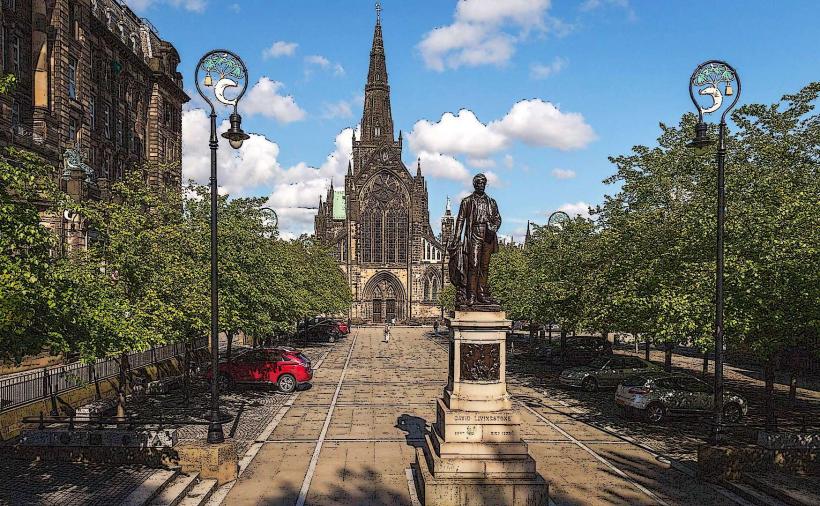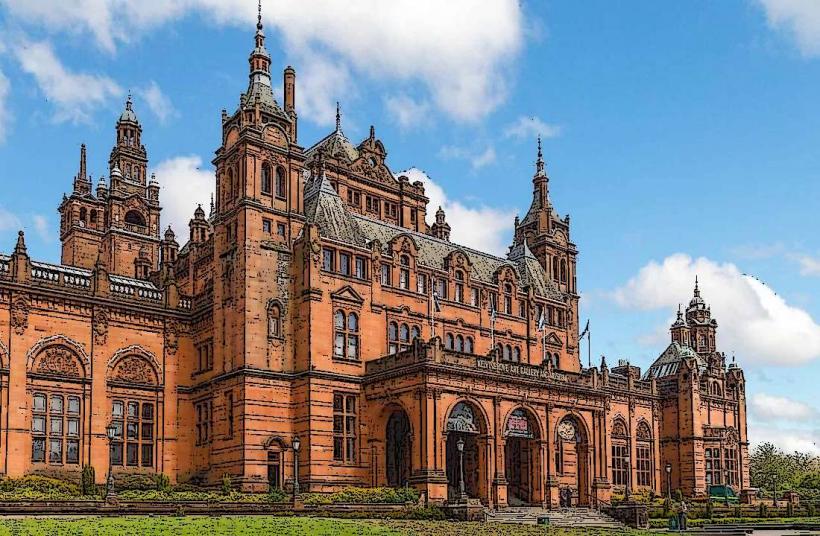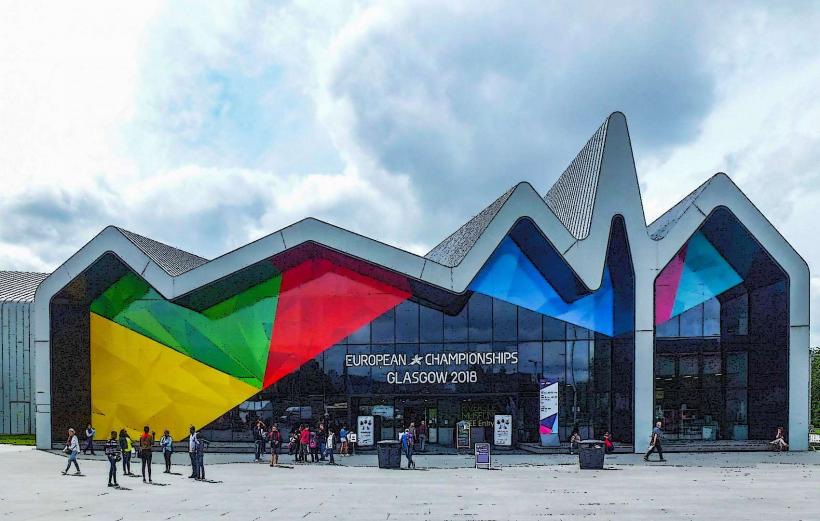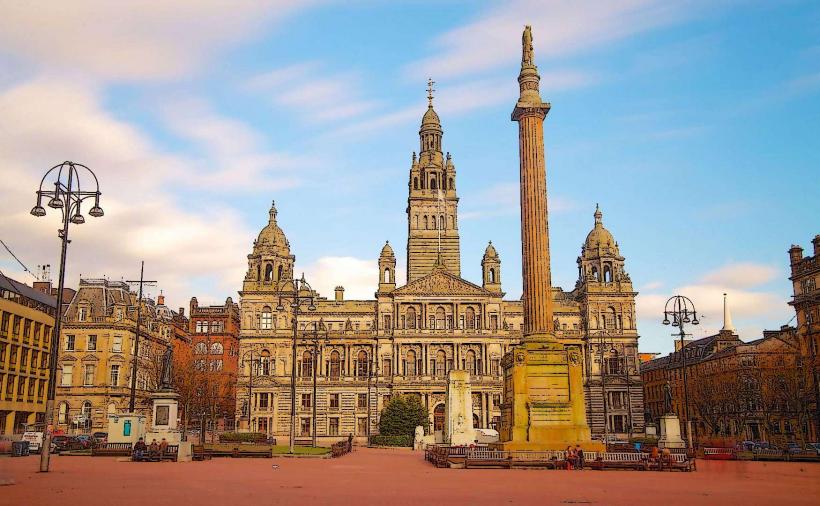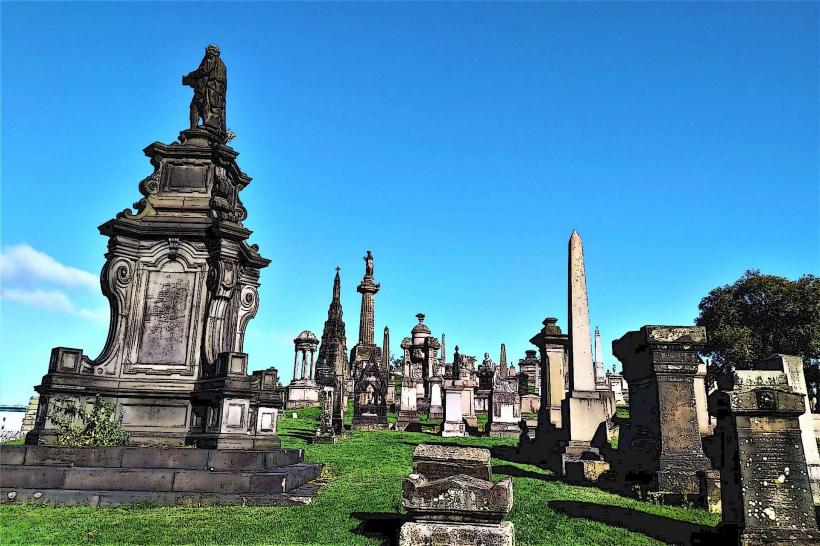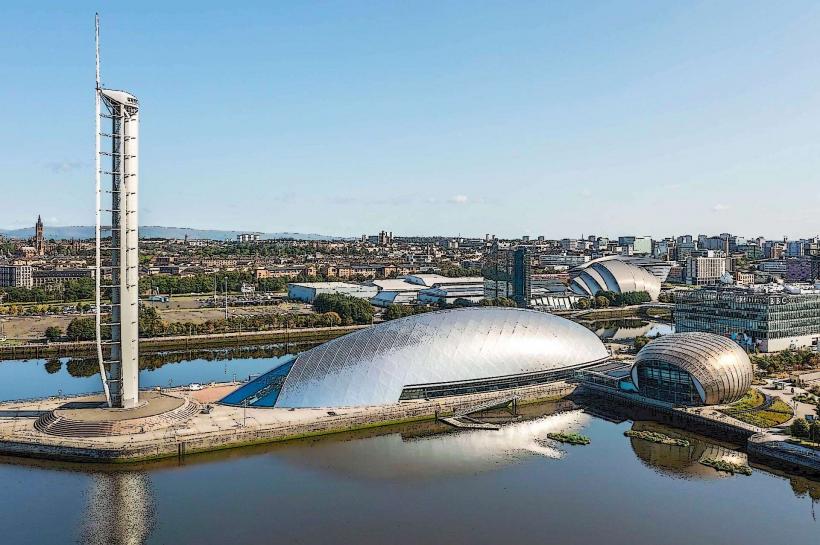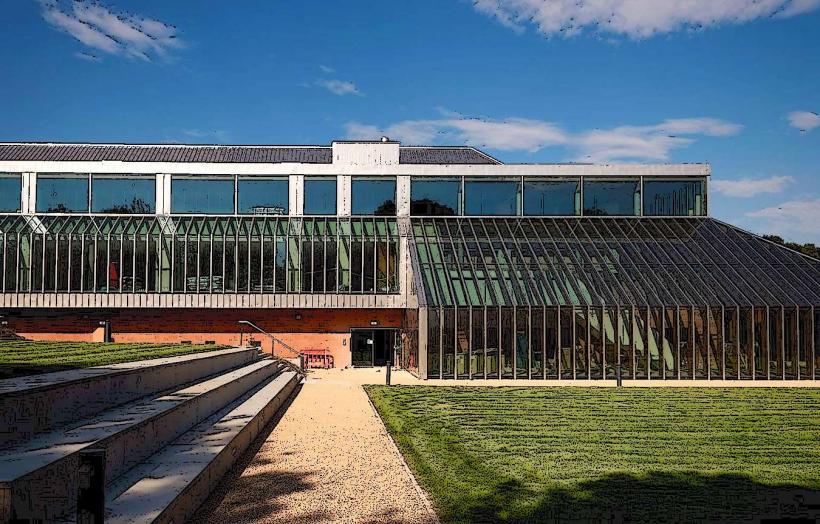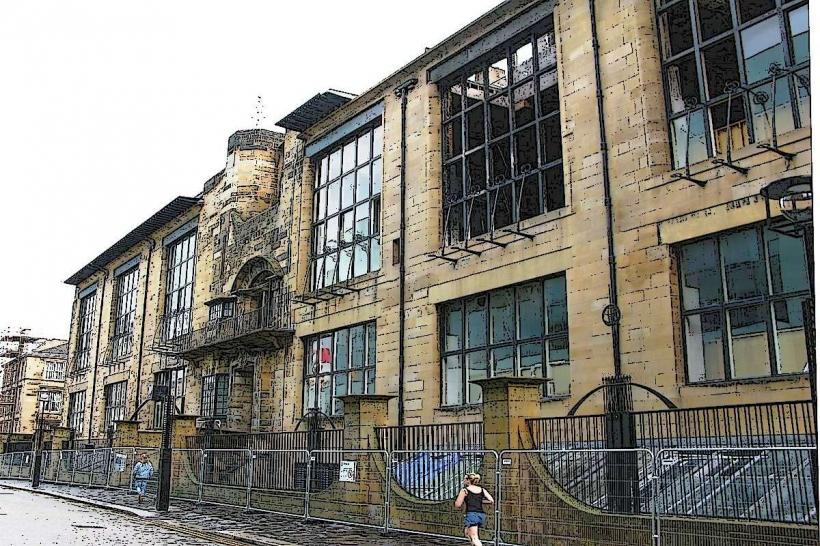Information
Landmark: Saint Mungos MuseumCity: Glasgow
Country: United Kingdom
Continent: Europe
St. Mungo’s Museum of Religious Life and Art is one of Glasgow’s most unique and thought-provoking museums, dedicated to exploring the diverse spiritual and religious traditions that have shaped human history. Located in the Glglasgow city center, near the Glasgow Cathedral, the museum offers a deep dive into the ways in which religion has influenced art, culture, and society throughout the ages.
Named after Saint Mungo, the patron saint of Glasgow, the museum is housed in a distinctive modern building with innovative architecture and houses an eclectic collection of religious artifacts, artworks, and exhibits from a variety of different faiths and spiritual practices.
Here is a detailed exploration of St. Mungo’s Museum, its origins, highlights, and significance:
History and Origins
Foundation and Purpose:
- St. Mungo’s Museum was opened in 1993 by the Glasgow City Council with the aim of providing a comprehensive and inclusive look at the role of religion in human life and culture. The museum’s mission is to promote understanding, tolerance, and respect among people of different faiths by showcasing religious practices, rituals, and beliefs from across the globe.
- The museum is named after Saint Mungo, the 6th-century missionary who is credited with bringing Christianity to Glasgow. Saint Mungo is also associated with the founding of Glasgow Cathedral, which stands nearby and is an important part of the city's religious heritage.
Design and Architecture:
- The building itself is a modern architectural masterpiece, designed to fit harmoniously within the historic context of the Glasgow Cathedral and the surrounding Necropolis. The museum’s architecture emphasizes a balance between the old and the new, reflecting the museum's mission to bridge the gap between different cultures and religious traditions.
- The building features large glass panels, allowing natural light to flood the interior and providing stunning views of the adjacent cathedral and parkland. The structure is both welcoming and contemplative, encouraging visitors to reflect on the spiritual themes explored within the museum.
Museum’s Goals and Themes:
- The museum is dedicated to showcasing the diversity of religious beliefs and practices across the world. It takes an inclusive approach, focusing not just on major world religions like Christianity, Islam, Judaism, Hinduism, and Buddhism, but also lesser-known and indigenous spiritual traditions.
- St. Mungo’s Museum seeks to educate the public about the history, art, and culture of religious life, emphasizing both the positive and challenging aspects of religion throughout history. It aims to create an environment of mutual respect, fostering dialogue about how religion impacts both personal and societal identity.
Key Highlights of the Museum’s Collection
St. Mungo’s Museum houses a wide variety of religious artifacts, artworks, and exhibits from around the world. Here are some of the key highlights of the collection:
Religious Art and Iconography:
- The museum is home to a significant collection of religious artworks, ranging from medieval Christian paintings and icons to modern depictions of religious figures. The collection highlights how religious beliefs have inspired artistic expression across cultures and epochs.
- Notable pieces include Byzantine and Eastern Orthodox icons, Christian crosses, statues of deities from Hinduism and Buddhism, and Islamic calligraphy and miniature paintings. These works serve as reflections of religious devotion and cultural identity.
Sacred Objects and Relics:
- The museum’s collection includes a wide array of sacred objects and relics from various world religions. These artifacts offer a tangible connection to the spiritual practices of different cultures.
- Examples include Christian relics such as fragments of the True Cross and medieval holy shrines, Islamic prayer beads, and Hindu ritual items such as puja trays and goddess statues.
- One of the most significant items in the collection is the St. Mungo’s Bell, an important religious artifact linked to the early Christian history of Glasgow.
Buddhist, Hindu, and Sikh Artefacts:
- The museum houses a number of Buddhist, Hindu, and Sikh artifacts, providing insight into the beliefs and practices of these spiritual traditions. Objects such as Buddha statues, prayer wheels, and Hindu temple carvings showcase the rich artistic and spiritual heritage of the Indian subcontinent and East Asia.
- The Sikh section includes examples of religious ceremonial objects, as well as illustrations of Sikh Gurus and the Golden Temple, one of the holiest sites in Sikhism.
The Jewish and Islamic Exhibits:
- The museum offers a deep exploration of Judaism and Islam, two of the world’s major monotheistic religions. The Jewish collection includes Torah scrolls, menorahs, star of David pendants, and other important religious items, providing an insight into the rich cultural heritage of Jewish communities.
- The Islamic section includes exquisite examples of calligraphy, Quranic manuscripts, and prayer rugs, alongside sacred items used in Islamic rituals. These objects highlight the role of Islam as a global religious and cultural force.
Indigenous Religions and Shamanic Practices:
- The museum also highlights the religious practices of indigenous communities around the world. Exhibits include shamanic artifacts, totem poles, and spiritual masks from Native American, African, and Pacific Islander traditions. These exhibits offer insight into the ways in which indigenous cultures have used ritual and art to connect with the divine and the natural world.
Contemporary Religious Issues:
- In addition to its historical and cultural collections, St. Mungo’s Museum also tackles contemporary issues related to religion. For example, there are exhibitions that explore the role of religion in the modern world, the relationship between religion and conflict, and the evolution of spiritual practices in response to the challenges of the 21st century.
- One such exhibit addresses the role of religion in global politics, focusing on religious communities in the Middle East, Africa, and South Asia and their impact on social and political change.
Educational and Cultural Programs
Interfaith Dialogue and Community Engagement:
- St. Mungo’s Museum actively promotes interfaith dialogue through a variety of community programs and events aimed at fostering understanding between people of different religious backgrounds. The museum hosts regular lectures, workshops, and panel discussions on topics such as religious tolerance, spirituality, and ethics.
- The museum also collaborates with local religious communities and organizations to host cultural celebrations, such as Hindu festivals, Jewish holidays, and Islamic events, allowing visitors to experience the richness of different religious traditions firsthand.
Schools and Educational Outreach:
- The museum plays an important role in educating younger generations about the diverse religious practices that shape the world. It offers a wide range of educational programs for schools and young people, including guided tours, workshops, and resource materials designed to promote tolerance and understanding.
- Schools can engage in hands-on activities, such as making their own sacred objects or learning about the different forms of religious art and symbolism. Special educational materials are available for both students and teachers to use in the classroom.
Temporary Exhibitions:
- In addition to its permanent collections, the museum regularly hosts temporary exhibitions that focus on specific religious themes or cultural events. These exhibitions might explore topics such as the religious art of Africa, the impact of religion on literature, or the intersections between religion and gender.
- Temporary exhibitions also allow the museum to highlight important events, such as World Religions Day, Interfaith Week, or International Peace Day, drawing attention to religious diversity and its role in fostering peace.
Visitor Experience
Interactive Exhibits:
- St. Mungo’s Museum is designed to be an engaging space for visitors. It offers a mix of traditional displays and interactive exhibits that encourage visitors to engage with the material in meaningful ways. This might include audio guides, interactive touchscreens, or immersive displays that explore the experiences of people from different religious traditions.
Café and Gift Shop:
- The museum includes a café where visitors can relax and enjoy light refreshments, often featuring food from different cultural traditions that tie into the museum’s global theme. The café also provides a space for reflection and discussion on the topics explored in the museum.
- The museum shop offers a range of gifts, including books on world religions, religious artwork, and culturally inspired items. The shop is a great place to purchase a memento that reflects the museum’s global and spiritual themes.
Access and Facilities:
- The museum is accessible to all visitors, with facilities for those with mobility impairments, including wheelchair access and accessible toilets. The museum’s central location near the Glasgow Cathedral and Necropolis makes it easy to access by public transport, and it is within walking distance of other cultural attractions in Glasgow.
Conclusion
St. Mungo’s Museum of Religious Life and Art stands as a testament to Glasgow’s commitment to celebrating and promoting religious and cultural diversity. Through its vast collection of religious artifacts, educational programs, and dedication to fostering interfaith dialogue, the museum serves as a vital resource for both locals and visitors, encouraging understanding, tolerance, and respect across religious and cultural boundaries. Whether you are interested in exploring the artistic representations of religious beliefs, learning about the spiritual practices of different faiths, or simply reflecting on the role of religion in the modern world, St. Mungo’s Museum offers a thought-provoking and enriching experience.

